Pumpkin French Toast Casserole: The Ultimate Comfort Breakfast Recipe
What Is Pumpkin French Toast Casserole?
Pumpkin French Toast Casserole is a warm and comforting breakfast dish that combines the flavors of traditional French toast with the rich, autumn-inspired taste of pumpkin. To begin with, the process starts by layering cubed bread, often brioche or challah, in a baking dish. Then, the bread is soaked in a rich custard mixture that includes pumpkin puree, eggs, and milk. Furthermore, spices such as cinnamon and nutmeg are added, along with sweeteners like brown sugar or maple syrup, to enhance the flavor.
This casserole is baked until golden and slightly crispy on top while remaining soft and custard-like inside. In addition, it’s often finished with a crumbly streusel, a dusting of powdered sugar, or a drizzle of syrup to add extra sweetness and texture.. Pumpkin French Toast Casserole is perfect for fall gatherings, brunches, or as a make-ahead dish for busy mornings, offering a delightful blend of textures and flavors that celebrate the season. Learn more about the history of French toast to appreciate this dish’s roots.
Ingredients You’ll Need for Pumpkin French Toast Casserole
For the Casserole:
- Bread: Brioche, challah, or French bread (cubed, slightly stale bread works best).
- Pumpkin Purée: Canned or homemade (unsweetened, not pumpkin pie filling). Here’s a guide on how to make your own pumpkin purée if you prefer homemade.
- Eggs: To create the custard base.
- Milk: Whole milk, half-and-half, or a dairy-free alternative like almond milk.
- Brown Sugar: Adds sweetness and depth of flavor.
- Vanilla Extract: For a warm, aromatic touch.
- Pumpkin Pie Spice: A blend of cinnamon, nutmeg, ginger, and cloves (or use individual spices).
- Cinnamon: For extra spice.
- Maple Syrup or Honey (optional): Adds sweetness to the custard.
For the Topping (Optional but Recommended):
- Butter: Softened or melted.
- Brown Sugar: To create a crumbly, sweet topping.
- Flour: All-purpose, to bind the topping ingredients.
- Chopped Nuts: Such as pecans or walnuts (optional).
- Cinnamon: For flavor.
Serving (Optional):
- Powdered Sugar: For a light dusting.
- Maple Syrup: To drizzle on top.
- Whipped Cream: For an indulgent finish.
How to Prepare the Best Pumpkin French Toast Casserole
Step 1: Prepare the Bread
Cut your bread (brioche, challah, or French bread) into 1-inch cubes. Afterward, let the cubes sit out for a few hours to become slightly stale, or toast them lightly in the oven at 300°F (150°C) for 10 minutes.
Step 2: Make the Pumpkin Custard
In a large mixing bowl, whisk together:
- 1 cup of pumpkin purée
- 6 large eggs
- 2 cups of milk or half-and-half
- ½ cup of brown sugar
- 1 teaspoon of vanilla extract
- 2 teaspoons of pumpkin pie spice
- 1 teaspoon of cinnamon
- (Optional) 2 tablespoons of maple syrup or honey for extra sweetness.
Then, mix until smooth and well combined.
Step 3: Assemble the Casserole
- First, grease a 9×13-inch baking dish with butter or cooking spray.
- Next, spread the bread cubes evenly in the dish.
- Pour the pumpkin custard mixture over the bread cubes, ensuring every piece is well coated.
- Finally, lightly press down on the bread to help it absorb the custard.
Step 4: Add the Topping (Optional)
To enhance the dish, in a small bowl, mix:
- ½ cup of softened butter
- ½ cup of brown sugar
- ½ cup of flour
- (Optional) ½ cup of chopped pecans or walnuts
- 1 teaspoon of cinnamon.
After mixing, sprinkle the crumbly topping evenly over the casserole.
Step 5: Let it Rest
Cover the dish with plastic wrap or foil and refrigerate it for at least 2 hours or overnight. This way, the bread gets enough time to soak up the custard evenly, ensuring a perfect texture.
Step 6: Bake the Casserole
- Preheat your oven to 350°F (175°C).
- Once ready, remove the casserole from the refrigerator and let it sit at room temperature for 15–20 minutes.
- Bake uncovered for 45–55 minutes, or until the top is golden and the custard is set (not jiggly in the center).
Step 7: Serve and Enjoy
Let the casserole cool for a few minutes before serving. To finish, top with powdered sugar, maple syrup, or whipped cream if desired. Ultimately, serve warm and enjoy this autumn-inspired breakfast treat!
Baking Tips for Perfect Pumpkin French Toast Casserole
Baking is as much an art as it is a science, and achieving perfect results often comes down to understanding a few key principles. Whether you’re a beginner or an experienced baker, these tips will help you elevate your baking game.
1. Read the Recipe Thoroughly
Before you start, read the entire recipe from start to finish. Understanding each step will help you avoid mistakes and ensure you have all the ingredients and tools ready.
2. Measure Ingredients Accurately
Baking requires precision. Use measuring cups and spoons for dry ingredients and a liquid measuring cup for wet ones. A kitchen scale is even better for exact measurements.
3. Use Room-Temperature Ingredients
Many recipes call for room-temperature butter, eggs, and dairy. Let these sit out for 30 minutes before starting. Room-temperature ingredients mix more evenly, creating a smoother batter.
4. Preheat Your Oven
Always preheat your oven to the specified temperature before placing anything inside. An oven thermometer can help ensure your oven is at the correct temperature.
5. Sift Dry Ingredients
Sifting flour, cocoa powder, and powdered sugar helps remove lumps and evenly distributes ingredients. This step can make a big difference in the texture of your baked goods.
6. Don’t Overmix the Batter
Mix just until ingredients are combined. Overmixing can lead to dense or tough baked goods by developing too much gluten in the flour.
7. Use Quality Ingredients
High-quality ingredients, such as pure vanilla extract, fresh spices, and real butter, can dramatically improve the flavor of your baked goods.
8. Grease and Prepare Pans Properly
Follow the recipe’s instructions on preparing your pans. Use parchment paper for cakes or lightly grease and flour your pans to prevent sticking.
9. Avoid Opening the Oven Door Too Often
Each time you open the oven, heat escapes, which can affect how evenly your baked goods cook. Use the oven light to check progress.
10. Cool Properly
Let your baked goods cool in the pan for the time specified in the recipe before transferring them to a wire rack. This prevents them from breaking or sticking.
11. Invest in Good Tools
High-quality baking tools, such as sturdy mixing bowls, silicone spatulas, and a reliable stand mixer, can make your baking experience smoother and more enjoyable.
12. Practice Patience
Baking takes time. Follow the recipe’s timing closely and resist the urge to rush. Let your creations cool fully before decorating or slicing.
13. Experiment and Learn
Not everything will turn out perfect the first time, and that’s okay! Learn from each bake, and don’t be afraid to experiment with flavors or techniques.
Topping Suggestions for Pumpkin French Toast Casserole
Sweet and Creamy Toppings:
- Maple Syrup – A classic choice that pairs perfectly with pumpkin flavors.
- Whipped Cream – Light and fluffy, adding a creamy contrast to the casserole.
- Cream Cheese Glaze – A drizzle of sweetened cream cheese frosting for a tangy twist.
- Caramel Sauce – Rich and buttery, it enhances the pumpkin spice notes.
Nutty and Crunchy Toppings:
- Chopped Pecans or Walnuts – Toasted nuts add a crunchy texture and nutty flavor.
- Granola – For a hearty, crunchy topping.
- Pumpkin Seeds – Toasted seeds complement the pumpkin theme.
Fruity Toppings:
- Sliced Bananas – Adds a natural sweetness and soft texture.
- Fresh Berries – Blueberries, raspberries, or sliced strawberries for a burst of freshness.
- Apple Compote – Cooked apples with cinnamon for a warm, fruity addition.
Spicy and Seasonal Toppings:
- Cinnamon Sugar – Sprinkle over the top for extra warmth and sweetness.
- Pumpkin Pie Spice – A pinch enhances the pumpkin flavor.
- Candied Ginger – For a spicy-sweet kick.
Decadent Extras:
- Chocolate Chips – Melted chocolate adds a rich indulgence.
- Coconut Flakes – Toasted coconut for a tropical twist.
- Vanilla Ice Cream – Perfect for serving warm casserole as dessert.
These toppings let you customize your Pumpkin French Toast Casserole for any occasion, whether breakfast, brunch, or dessert!
Best Occasions to Serve Pumpkin French Toast Casserole
Pumpkin French Toast Casserole is versatile and perfect for a variety of occasions, especially those that call for comforting, seasonal flavors. Here are the best occasions to serve this dish:
1. Holiday Breakfasts or Brunches
- Thanksgiving Morning: Start the holiday with a warm, festive dish before the big feast.
- Christmas Brunch: Its cozy, spiced flavors make it a holiday favorite.
2. Weekend Family Gatherings
- A great dish to serve when you want to impress your family with minimal effort. It’s hearty, easy to prepare, and feeds a crowd.
3. Potlucks and Social Gatherings
- Perfect for bringing to a breakfast or brunch potluck. It’s easy to transport and always a crowd-pleaser.
4. Seasonal Celebrations
- Fall-Themed Parties: The pumpkin flavor makes it ideal for celebrating autumn.
- Halloween Morning: A festive way to kick off a spooky day.
5. Make-Ahead Breakfasts
- Ideal for busy mornings or when hosting overnight guests. Prepare it the night before and bake fresh in the morning.
6. Mother’s Day or Father’s Day
- A thoughtful and delicious dish for a special breakfast in bed or family celebration.
7. Just Because
- Enjoy it anytime you’re craving a cozy, pumpkin-filled breakfast or want to treat yourself to something special.
Nutritional Benefits of Pumpkin in the Recipe
Pumpkin is not only a versatile ingredient for savory and sweet dishes but also a nutritional powerhouse. Whether used in soups, pies, smoothies, or baked goods, adding pumpkin to your recipes can bring a host of health benefits. Here’s a closer look at why pumpkin is a great choice for your meals:
1. Rich in Vitamins and Minerals
Pumpkin is packed with essential vitamins and minerals, including:
- Vitamin A: Supports healthy vision, immune function, and skin health.
- Vitamin C: Boosts immunity and promotes healthy skin.
- Vitamin E: Acts as an antioxidant to protect cells.
- Potassium: Helps regulate blood pressure and maintain heart health.
- Magnesium: Supports muscle function and bone health.
2. High in Antioxidants
Pumpkin contains powerful antioxidants like beta-carotene, which gives it its vibrant orange color. These antioxidants help combat free radicals in the body, reducing inflammation and lowering the risk of chronic diseases.
3. Low in Calories
Pumpkin is naturally low in calories and fat, making it an excellent ingredient for weight management. A one-cup serving of cooked pumpkin contains just around 50 calories.
4. Excellent Source of Dietary Fiber
The fiber in pumpkin helps with:
- Digestive health: Promotes regular bowel movements and prevents constipation.
- Satiety: Keeps you feeling full longer, which can aid in weight control.
- Blood sugar regulation: Helps stabilize blood sugar levels, making it beneficial for people with diabetes.
5. Supports Heart Health
The potassium and fiber in pumpkin contribute to heart health by:
- Reducing blood pressure.
- Improving cholesterol levels.
- Supporting overall cardiovascular function.
6. Boosts Immunity
The high levels of vitamin A and C in pumpkin enhance your immune system, helping your body fight off infections more effectively.
7. Skin Health Benefits
Pumpkin’s beta-carotene content helps protect the skin from UV damage. Additionally, its antioxidants and vitamins support healthy, glowing skin.
8. Great for Eye Health
Thanks to its high levels of vitamin A and lutein, pumpkin supports good eyesight and may reduce the risk of age-related macular degeneration.
9. May Improve Mood
Pumpkin seeds, often included in recipes or consumed as a snack, are rich in tryptophan, an amino acid that promotes serotonin production. This can help improve mood and reduce feelings of depression.
Incorporating Pumpkin into Recipes
- Add it to soups or stews for creaminess and flavor.
- Use it as a healthy replacement for butter or oil in baking.
- Blend it into smoothies or lattes for a seasonal twist.
- Incorporate it into pasta sauces or dips for added nutrients.
Pumpkin is more than just a seasonal ingredient; it’s a delicious and nutritious addition to your diet all year round.
Common Mistakes to Avoid
Cooking and Baking
- Skipping Ingredient Measurements
- Guessing quantities can ruin the recipe. Always measure accurately.
- Not Preheating the Oven
- Baking without preheating can lead to uneven cooking.
- Overmixing Batter
- This can make baked goods dense or tough instead of light and fluffy.
- Cooking Pasta Without Enough Water
- Insufficient water can make pasta sticky and unevenly cooked.
Fitness and Exercise
- Skipping Warm-ups and Cool-downs
- This increases the risk of injury and muscle soreness.
- Using Incorrect Form
- Poor technique can lead to ineffective workouts or injuries.
- Overtraining Without Rest
- Neglecting rest days can cause burnout and slow progress.
Writing and Blogging
- Not Proofreading
- Typos and errors can harm credibility.
- Ignoring Your Audience
- Writing without understanding your readers’ interests can lower engagement.
- Overloading With Keywords
- Overusing keywords for SEO can make content unnatural.
Time Management
- Procrastination
- Delaying tasks leads to unnecessary stress and rushed work.
- Not Prioritizing Tasks
- Focusing on low-priority tasks wastes valuable time.
- Failing to Set Deadlines
- Without deadlines, projects can drag on indefinitely.
Everyday Life
- Not Saving for Emergencies
- A lack of savings can make unexpected expenses overwhelming.
- Avoiding Difficult Conversations
- This can create misunderstandings or unresolved issues.
- Not Asking for Help
- Trying to do everything yourself can lead to burnout.
How to Store and Reheat Your Pumpkin French Toast Casserole
Storing Leftovers
- Cool Completely: Allow the casserole to cool to room temperature before storing.
- Refrigerate: Transfer leftovers to an airtight container or cover the baking dish tightly with plastic wrap or foil. Store in the refrigerator for up to 3–4 days.
- Freeze (Optional):
- Cut the casserole into individual portions for easier reheating.
- Wrap each portion tightly in plastic wrap and place in a freezer-safe bag or container.
- Freeze for up to 2–3 months.
Reheating Leftovers
- Reheating in the Oven (Best Method for Larger Portions):
- Preheat the oven to 350°F (175°C).
- Place the casserole (or individual portions) in an oven-safe dish.
- Cover with foil to prevent drying out.
- Heat for 15–20 minutes, or until warmed through.
- Reheating in the Microwave (Quick Method for Individual Portions):
- Place a portion on a microwave-safe plate.
- Heat on medium power for 1–2 minutes, checking halfway through.
- If it feels dry, add a small drizzle of milk or syrup before reheating.
- Reheating from Frozen:
- Thaw in the refrigerator overnight before reheating.
- Follow the oven or microwave instructions above for best results.
Tips for Reheating
- To keep the top crispy, broil the casserole for the last 1–2 minutes when reheating in the oven.
- Add fresh toppings like syrup, powdered sugar, or whipped cream after reheating for a just-made taste.
By storing and reheating it properly, you can enjoy this delicious casserole even after its debut!
Creative Variations of Pumpkin French Toast Casserole
Elevate your Pumpkin French Toast Casserole with these delicious twists to suit different tastes and occasions!
1. Streusel-Topped Pumpkin Casserole
Add a crumbly topping made from butter, brown sugar, flour, oats, and pecans for added texture and sweetness.
- Sprinkle the streusel before baking for a golden, crunchy layer.
2. Chocolate Lover’s Twist
- Mix in chocolate chips or drizzle the baked casserole with melted chocolate.
- Use dark or semi-sweet chocolate to balance the sweetness.
3. Cream Cheese Swirl
- Dollop sweetened cream cheese (cream cheese mixed with powdered sugar and vanilla) throughout the casserole before baking.
- Swirl it into the custard for a creamy, tangy surprise.
4. Maple-Pecan Delight
- Layer the top with candied pecans and drizzle with pure maple syrup after baking.
- The nuts add a caramelized crunch that pairs beautifully with the pumpkin flavor.
5. Apple-Pumpkin Fusion
- Mix sautéed apples (cooked with butter, sugar, and cinnamon) into the bread or layer them on top.
- This adds a fresh, fruity element to the casserole.
6. Boozy Pumpkin French Toast
- Add a splash of bourbon, rum, or spiced liqueur (like pumpkin spice or amaretto) to the custard mixture.
- Great for adult brunches or holiday gatherings.
7. Gluten-Free Version
- Substitute regular bread with gluten-free bread and use a gluten-free flour blend for the topping.
8. Dairy-Free Variation
- Use almond milk, coconut milk, or oat milk instead of dairy.
- For the topping, replace butter with vegan butter or coconut oil.
9. Pumpkin-Cranberry Casserole
- Add dried cranberries or fresh cranberries to the bread mixture for a tart, festive twist.
- Sprinkle extra cranberries on top for decoration.
10. Spiced Chai Pumpkin Casserole
- Replace pumpkin pie spice with a chai spice blend (cinnamon, cardamom, ginger, and cloves).
- Pair with chai tea for a cozy breakfast experience.
11. Savory Pumpkin Casserole
- Skip the sugar and spices in the custard, and instead, add grated cheese (like Gruyère) and spices like sage or thyme.
- Top with crispy bacon or sausage for a savory breakfast.
12. Individual Mini Casseroles
- Bake the mixture in ramekins or muffin tins for single-serve portions.
- Great for grab-and-go breakfasts or elegant brunch presentations.
13. Pumpkin-Peanut Butter Casserole
- Add dollops of peanut butter or mix it into the custard for a rich, nutty flavor.
- Top with crushed peanuts for added crunch.
14. Caramel Pumpkin Delight
- Drizzle the baked casserole with caramel sauce and top with a sprinkle of sea salt for a sweet and salty treat.
15. Pumpkin Banana Casserole
- Add slices of ripe bananas between the layers of bread.
- The bananas caramelize slightly during baking, adding a natural sweetness.
Why Pumpkin French Toast Casserole Is the Perfect Fall Dish
Pumpkin French Toast Casserole is perfect for fall because it embodies the essence of the season in both flavor and experience. Here’s why it’s a must-have autumn dish:
1. Warm and Comforting
Fall is all about cozy, heartwarming foods as the weather cools. The casserole’s soft, custardy texture and warm spices like cinnamon, nutmeg, and cloves offer a sense of comfort that’s perfect for crisp autumn mornings.
2. The Iconic Pumpkin Flavor
- Pumpkin is the ultimate fall ingredient, featured in everything from pies to lattes. This dish embraces pumpkin’s earthy sweetness, paired with complementary spices, creating a quintessential autumn flavor profile.
3. Easy to Make for Gatherings
- Fall is a season of togetherness, with events like Thanksgiving, potlucks, and family brunches. This casserole is ideal for serving a crowd, requiring minimal effort while delivering maximum flavor and satisfaction.
4. Seasonal Ingredients
- The recipe highlights classic fall ingredients like pumpkin puree, warm spices, and sometimes add-ons like pecans, apples, or cranberries, making it a natural fit for autumn.
5. Perfect for Make-Ahead Convenience
- As days get busier with holiday preparations and school schedules, this make-ahead dish provides a stress-free breakfast or brunch option. Prep it the night before and bake it fresh in the morning.
6. A Cozy Way to Start the Day
- Served warm from the oven, this dish is like a hug on a plate, especially when paired with hot coffee, tea, or cider. It’s the perfect way to start a cool, crisp fall day.
7. Versatile for Sweet or Savory Additions
- Fall offers a bounty of flavors, and this casserole can be customized with ingredients like caramel, chocolate chips, nuts, or fruit to enhance its seasonal appeal.
8. A Festive Touch
- Its golden-orange color and spiced aroma feel festive and inviting, making it a centerpiece-worthy addition to autumn tables.
9. Nostalgic and Seasonal Appeal
- Pumpkin French Toast Casserole taps into the nostalgia of fall traditions, like pumpkin carving, leaf peeping, and baking spiced treats, creating a connection to the season.
10. A Great Pairing for Fall Drinks
- Pair it with fall beverages like pumpkin spice lattes, apple cider, or chai tea to create a full seasonal experience.
History of French Toast Casserole
The history of French Toast Casserole is closely tied to the origins of French toast, a dish with ancient roots that evolved into its modern baked casserole form. Here’s an overview of its journey:
1. Ancient Origins of French Toast
- French toast dates back to ancient Rome, where a similar dish called “Pan Dulcis” was made by soaking bread in milk and frying it.
- Recipes like this were a way to repurpose stale bread, preventing waste and creating a rich, satisfying meal.
2. Medieval Variations
- During the Middle Ages in Europe, recipes for French toast appeared in cookbooks. Known as “pain perdu” (meaning “lost bread” in French), it used day-old bread, which was soaked in an egg mixture and fried.
- The dish became popular as an affordable, sweet treat, often flavored with honey or sugar.
3. French Toast in America
- French toast recipes arrived in America with European immigrants. Over time, it became a beloved breakfast staple, often enhanced with toppings like syrup, powdered sugar, and fruit.
4. Emergence of French Toast Casserole
- The idea of a baked French toast casserole likely emerged in the mid-20th century in the United States.
- Home cooks and recipe developers adapted traditional French toast to a make-ahead, oven-baked format, perfect for feeding a crowd.
- This evolution was likely influenced by the convenience-focused cooking trends of the 1950s and 60s, when casseroles became a popular household staple.
5. The Modern Pumpkin Twist
- Over time, seasonal variations like Pumpkin French Toast Casserole gained popularity, especially in the U.S. during the fall season, when pumpkin-flavored foods became trendy.
- The addition of pumpkin puree and spices aligns with the broader love for pumpkin pie and pumpkin spice lattes, making it a natural and festive evolution.
6. Cultural Significance
- Today, French Toast Casserole is cherished as a versatile dish for brunches, holiday breakfasts, and potlucks. Its baked format allows for creative adaptations, from streusel toppings to fruit and nut add-ins.
Casserole vs. Traditional French Toast
French Toast Casserole and Traditional French Toast are both delicious breakfast dishes, but they differ in preparation, texture, and convenience. Here’s a comparison:
1. Preparation
Traditional French Toast:
- Made by dipping individual slices of bread in an egg mixture and frying them on a skillet or griddle.
- Requires constant attention and flipping during cooking.
- Best suited for small batches.
- French Toast Casserole:
- Involves layering bread cubes in a baking dish and pouring the custard mixture over them.
- Baked in the oven, requiring minimal active cooking time.
- Ideal for large groups or make-ahead preparation.
2. Texture
- Traditional French Toast:
- Crisp edges with a soft, custardy interior.
- Each slice is cooked evenly but retains its individual texture.
- French Toast Casserole:
- Soft, bread pudding-like interior with a slightly crisp or crumbly top if topped with streusel or nuts.
- Has a more uniform texture throughout, especially in the base.
3. Cooking Time
- Traditional French Toast:
- Cooks quickly, with each slice taking 2–3 minutes per side.
- Can be time-consuming for larger batches as slices are cooked one or two at a time.
- French Toast Casserole:
- Takes longer to bake (around 45–55 minutes), but the entire dish is cooked simultaneously.
- Requires less hands-on effort, as the oven does the work.
4. Convenience
- Traditional French Toast:
- Better for a quick breakfast or when serving a small group.
- Made fresh and served hot immediately after cooking.
- French Toast Casserole:
- Perfect for make-ahead meals. It can be assembled the night before and baked the next morning.
- Easier to serve at brunches or gatherings, as guests can scoop portions without the need for individual plating.
5. Customization
- Traditional French Toast:
- Customizable with toppings like syrup, powdered sugar, fruit, or whipped cream.
- Limited to variations in the bread or custard mixture.
- French Toast Casserole:
- Highly versatile. It can include layers of fruit, chocolate chips, nuts, or even savory ingredients.
- Toppings like streusel or caramel can be baked right into the dish.
6. Flavor
- Traditional French Toast:
- Each slice has a more intense flavor from the custard coating and frying process.
- Slightly richer due to the butter used in frying.
- French Toast Casserole:
- The flavors meld together as the dish bakes, creating a more cohesive taste.
- The bread absorbs the custard more thoroughly, resulting in a rich, uniform flavor.
7. Serving Style
- Traditional French Toast:
- Plated individually, often with toppings added at the table.
- Great for personalized servings.
- French Toast Casserole:
- Served family-style, straight from the baking dish.
- Ideal for sharing and buffet-style meals.
Which One to Choose?
- Choose Traditional French Toast for a quick, classic breakfast for a small group.
- Opt for French Toast Casserole when serving a crowd, hosting a brunch, or looking for a hands-off, make-ahead option.
FAQ
Why Is My French Toast Casserole Soggy?
- Too Much Liquid: Overloading the casserole with custard (egg and milk mixture) can make it overly wet.
- Not Enough Bread: Using too little or overly soft bread may cause it to absorb too much liquid and turn mushy.
- Bread Type: Using bread that is too fresh or soft can lead to sogginess. Stale or slightly dried-out bread works best.
- Undercooked: If the casserole isn’t baked long enough, the custard won’t set, leaving the center soggy.
- Too Tight a Cover: Covering the dish too tightly while baking can trap steam and prevent the top from crisping.
Tricks to Avoid Soggy French Toast
- Use Stale Bread: Slightly stale or toasted bread absorbs the custard without becoming overly soggy.
- Bread Type: Choose sturdy breads like brioche, challah, or French bread that can hold their shape.
- Balance the Custard: Use the right ratio of eggs to milk. A common guideline is 1 egg per ½ cup of milk.
- Don’t Oversoak: Let the bread absorb the custard evenly but avoid over-saturating it.
- Let It Rest: After pouring the custard over the bread, allow it to sit for at least 15–20 minutes (or overnight) to absorb evenly.
- Bake Properly: Ensure the casserole bakes long enough for the custard to set, typically 45–55 minutes at 350°F (175°C). Bake uncovered or uncover it halfway for a crisp top.
What Does Pumpkin Replace in Baking?
Pumpkin can replace a variety of ingredients in baking:
- Oil or Butter: Replace oil or melted butter in equal amounts (1 cup oil = 1 cup pumpkin). This reduces fat and adds moisture.
- Eggs: Replace 1 egg with ¼ cup of pumpkin puree as a binding agent, especially in vegan baking.
- Flavor Booster: It doesn’t replace anything but adds a unique flavor and natural sweetness in recipes like cakes, muffins, or pancakes.
- Milk or Cream: In some recipes, pumpkin puree can replace milk or cream to add creaminess.
How Do You Make Bobby Flay’s French Toast?
Bobby Flay’s French Toast often features bold flavors and a restaurant-quality twist. Here’s a general outline based on his style:
Ingredients:
- Thick slices of brioche or challah
- Eggs
- Whole milk or half-and-half
- Vanilla extract
- Ground cinnamon and nutmeg
- Butter for cooking
- Maple syrup for serving
Steps:
- Prepare the Custard:
- Whisk together eggs, milk, vanilla, cinnamon, and nutmeg in a shallow dish.
- Soak the Bread:
- Dip each slice of bread into the custard, letting it soak for a few seconds on each side.
- Cook the French Toast:
- Heat a griddle or skillet over medium heat and melt butter.
- Cook the soaked bread until golden brown and cooked through, about 3–4 minutes per side.
- Serve:
- Plate with a drizzle of maple syrup, powdered sugar, or a side of fresh fruit.
Tips from Bobby Flay:
- Use high-quality bread and let it dry out slightly for better absorption.
- Experiment with flavors in the custard, like orange zest or rum.
- Finish with a unique topping like whipped cream, spiced syrup, or caramelized fruit.

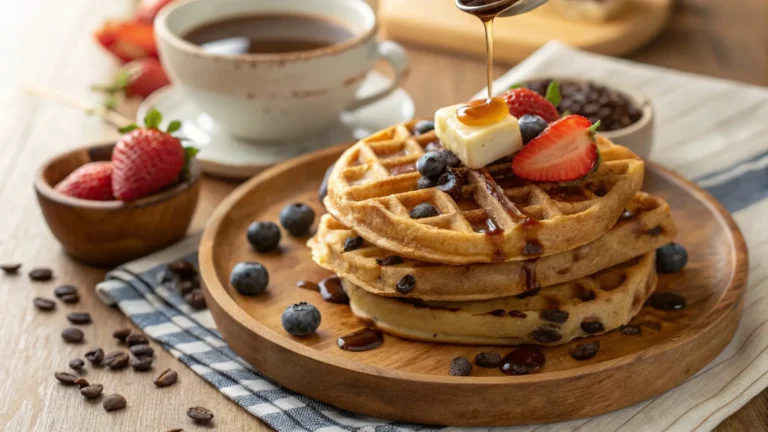
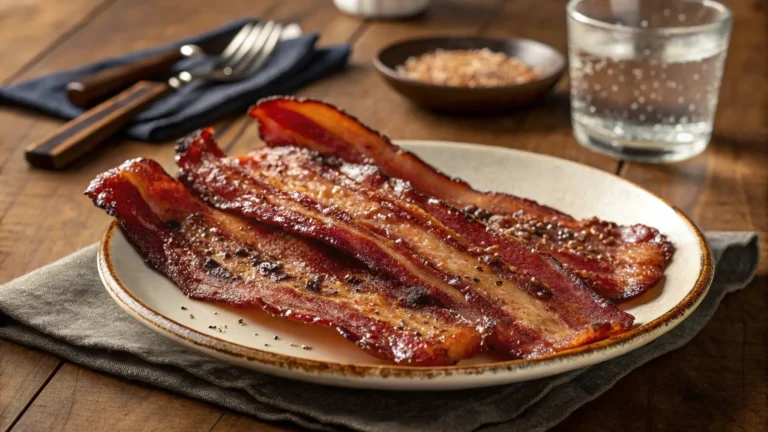
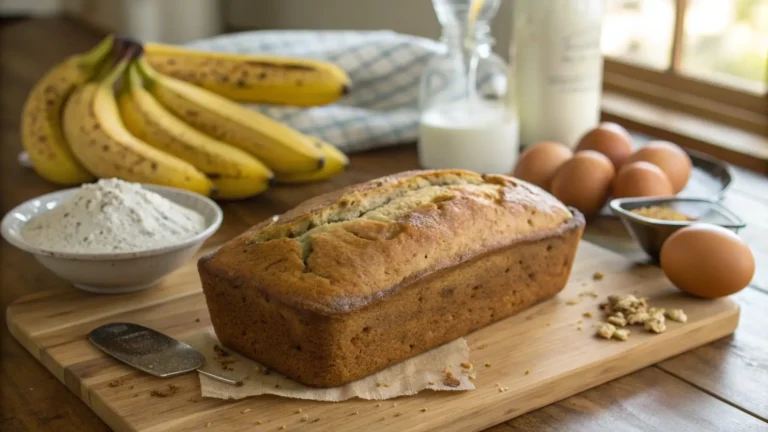
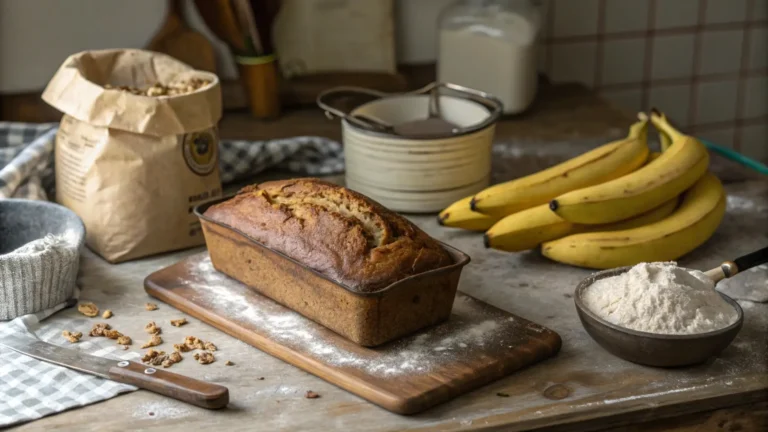
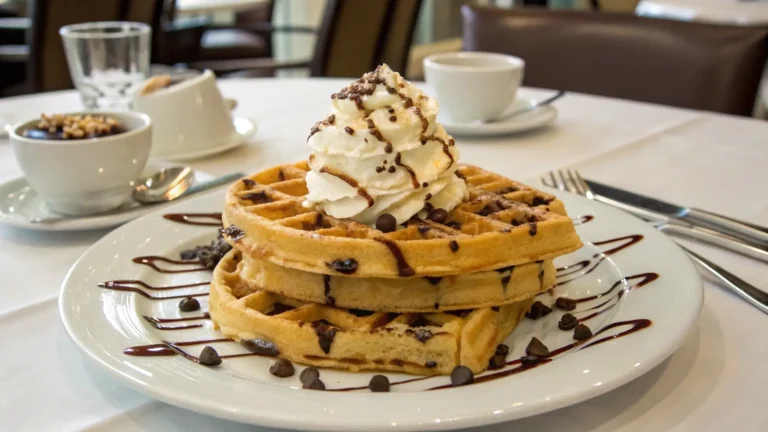

3 Comments